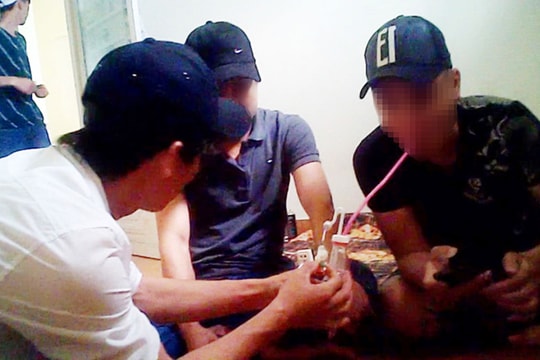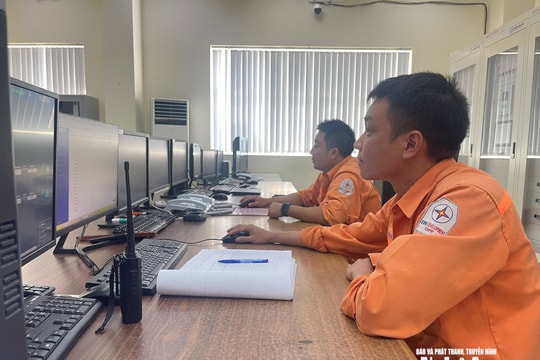(Baonghean.vn)- Behind the famous tiles and bricks of Cua Tan Ky are the hardships of the bricklayers. Many of them are women, having to do jobs that are normally reserved for men.
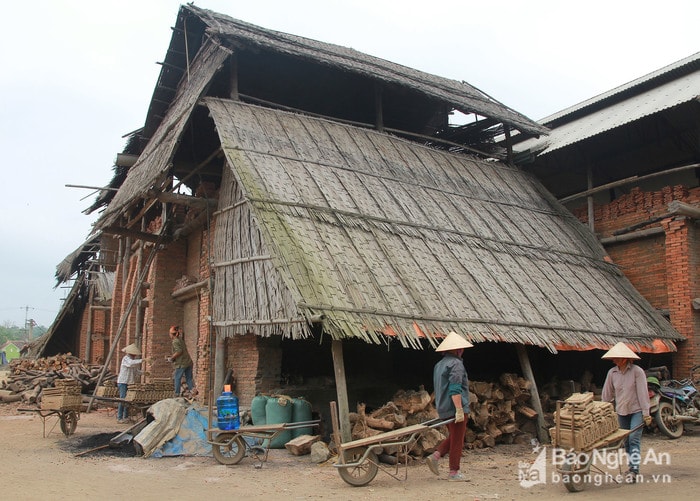 |
| Following the tile workers working at a brick kiln in Nghia Hoan commune, Tan Ky, we arrived at a tile kiln located near a residential area. Under makeshift thatched roofs, the workers started work early to avoid the harsh early summer sun of the land of Lao winds. Photo: An Vien. |
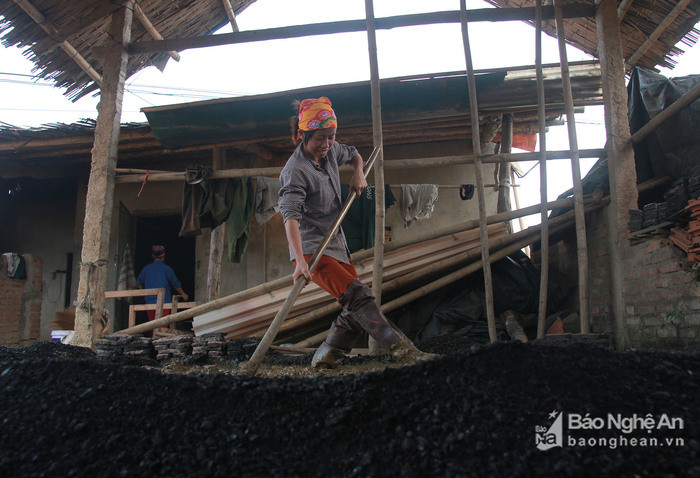 |
| While mixing coal, Ms. Chan (27 years old) said that making tiles here is also divided into many stages. There are people who specialize in pushing tiles (transporting tiles into the kiln, mixing coal, drying tiles, etc.); others specialize in entering the kiln (arranging tiles into the kiln); specializing in firing the kiln (baking tiles); taking the tiles out of the kiln (transporting tiles out of the kiln after they are cooked) or loading tiles onto trucks. Each person is in charge of a separate task because there are stages that not everyone can do. Photo: An Vien |
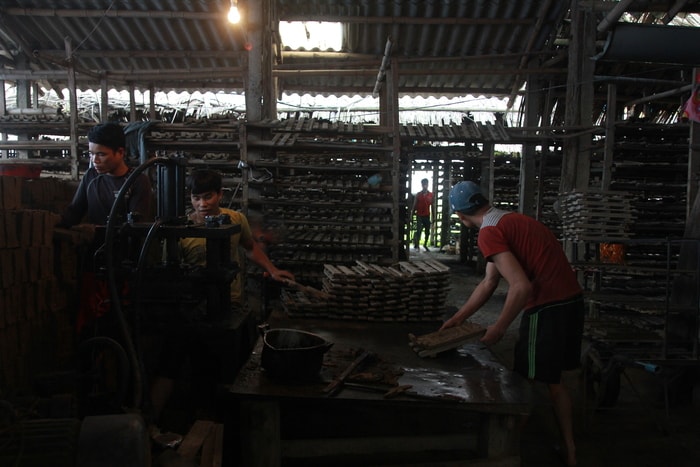 |
| The workers here are mostly from the commune, but there are also many workers from Dien Chau, Nghia Dan, Thanh Hoa... In the pungent smell of kerosene and the rumbling sound of machines, a group of workers are making tiles quickly. According to Mr. Hung, a brick maker: "We make bricks from 3 am until now. The electricity in the countryside is very weak, so we take advantage of every moment." Photo: An Vien |
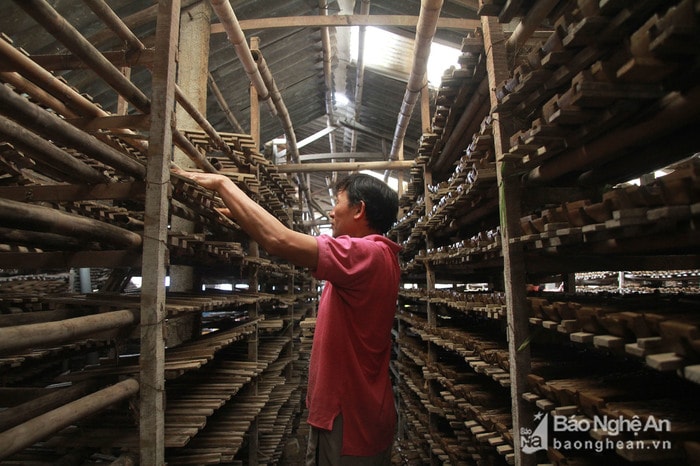 |
| Every day, bricklayers like Mr. Hung probably make up to thousands, tens of thousands of tiles. After making, the tiles will be dried (depending on the weather) until they are dry and white before being put into the kiln and fired. |
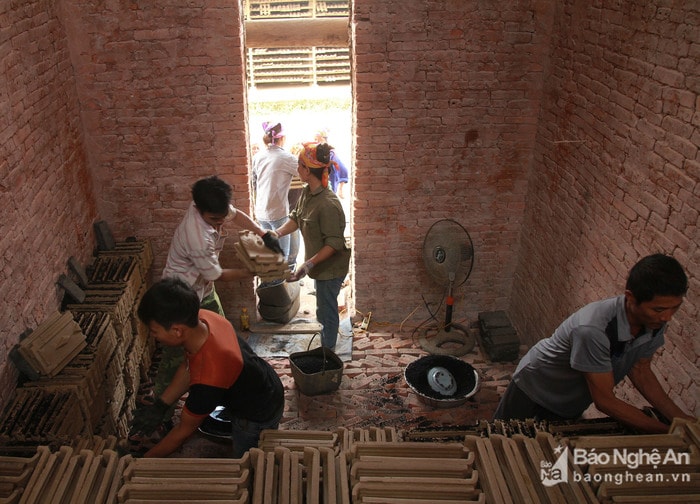 |
| Depending on the size of the tile kiln or the size of the tile kiln, the kiln owner hires a different number of workers. Normally, a small kiln will have 13 people, including 3 people working in the kiln and 10 people working in the tile pushing; a large kiln has 15 people a day (3 people working in the kiln and 12 people pushing the tiles). Photo: An Vien |
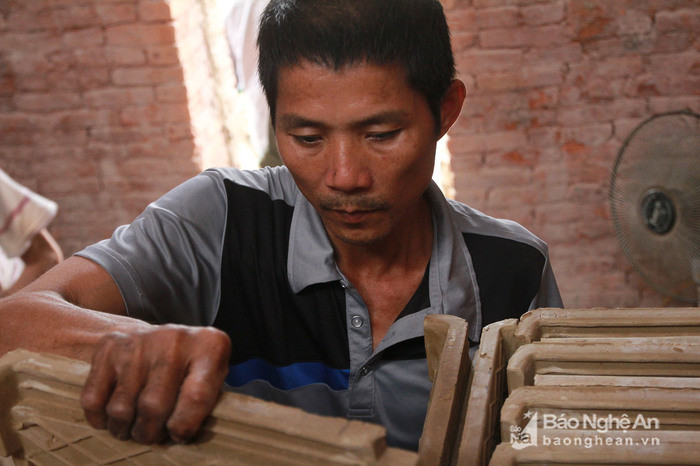 |
| As a veteran in the kiln, Mr. Suu said that not everyone can arrange tiles in the kiln because they have to measure the amount of coal spread evenly on the tiles or place the coal in the right position so that the tiles are evenly baked. It takes 3 people like Mr. Suu a day and a half to fill a small kiln of about 35,000 - 40,000 tiles, and a large kiln of about 50,000 tiles takes nearly 2 days. Photo: An Vien |
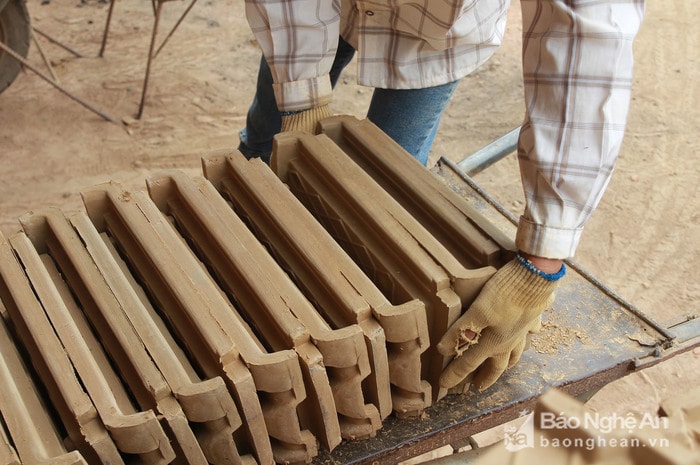 |
| Jobs like entering the kiln and lighting the kiln are mainly for men. Pushing tiles out of the kiln and loading bricks onto trucks are usually for women. Photo: An Vien |
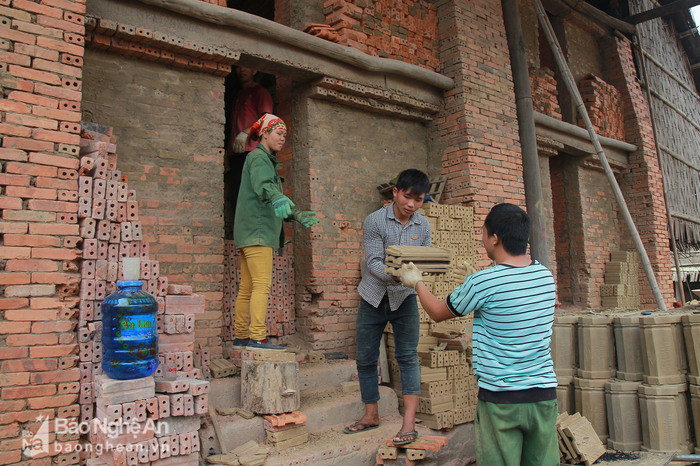 |
| The dry tiles weigh about 2 kg. On average, each person transports about 5-6 tons of tiles per day and receives 180-250 thousand VND in wages. Photo: An Vien |
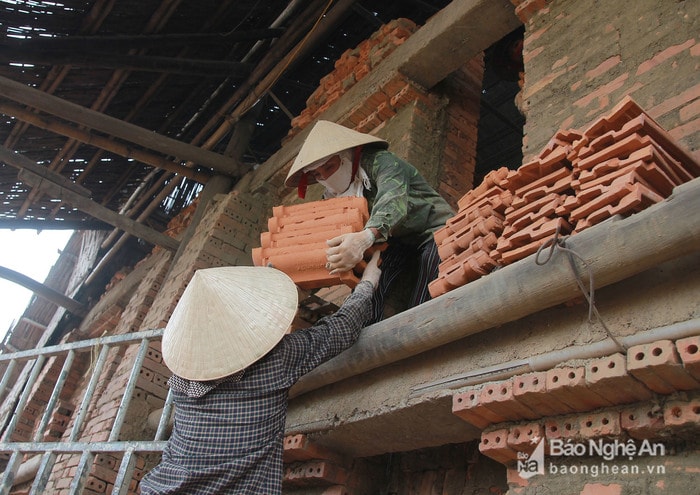 |
| Raising 5 children to go to school, the oldest is just in 9th grade, the youngest is just 2 years old, Ms. Thuy said: The number of years she worked in the kiln is exactly the same as the age of her eldest daughter. Unable to go to the kiln or into the kiln, she chose the job of removing tiles from the kiln after they are cooked, a job that pays quite well. For every 1,000 tiles, she is paid 100,000 VND. Normally, each day she and 5 other people can remove more than 20,000 tiles, which means each person gets about 350,000 VND/day. Photo: An Vien |
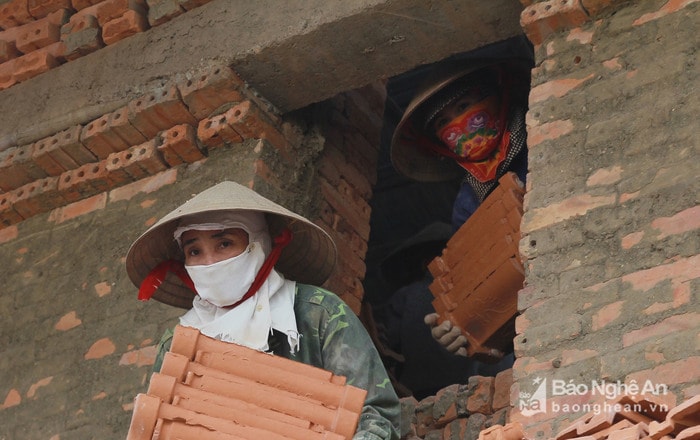 |
| Standing under the tile kiln for a while, we all felt short of breath, partly because of the dust and partly because of the lack of oxygen, but the women removing tiles from the kiln like Ms. Thuy still worked normally. Ms. Thuy shared, "I know it's toxic, but if I only depend on a few fields, where will I get the money to feed and educate my five children? But life and death are also fate, I've been doing this for decades and I've never had any problems." Photo: An Vien |
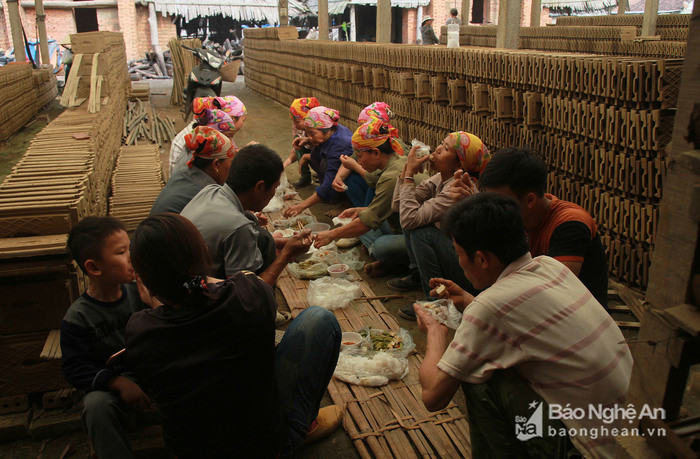 |
| After hours of tiring work, the workers take the opportunity to have a snack before continuing to fill the tile kilns. The tile workers here said that in the near future, the government will close all manual brick kilns to operate brick kilns using new technology. This information makes many people worried because for a long time, brick kilns have been the source of livelihood for many households in Cua land. Photo: An Vien |
An Vien












.jpg)


